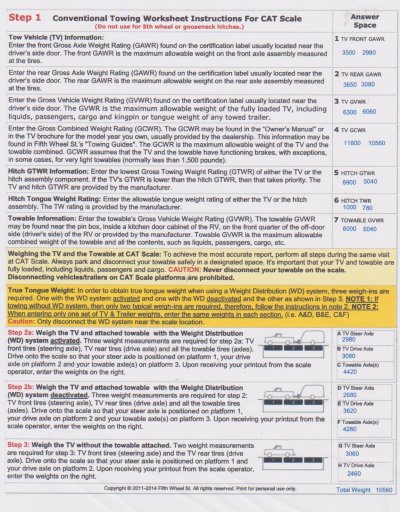garyk52
Senior Member
I read on the internet too much. It seems like most rvers feel you can't tow much with a 1/2 ton truck because of the tongue weight and the small payload numbers. Well I told my wife I think we either need to get a different camper or a bigger truck. So I took my Little Tundra and my big 24 foot Hi-Lo FunChaser to the Cat Scales. I needed to go across the scales 3 times. First time with distribution bars hooked up, then with them unhooked and the last time just the truck. I was suprised. The trailer had a full load of water and propane, the only thing missing is clothes and food. The truck had a full load of fuel and the wife and I. Total weight of the camper including tongue weight is 5040 lbs. 780lbs is the tongue weight which is an incredible 18.5% with the only way to lower is to change to 20lb lp tanks and not to carry water even though water only drops 90lb from the tongue weight. With the WD hooked up the front axle rate was 2980lbs and I'm allowed 3500lbs and truck only was 3060lbs so I'm 80 lbs lighter on the truck with the WD hooked up. Not Bad. The rear axle rating is 3650 lbs. With WD I'm at 3080lbs and truck only is 2460lbs so I'm 570lbs under on the rear. Now we come to payload, truck sticker say 1309 lbs. With the WD hooked up the total weight of my truck is 6060 and my gross vehicle rating is 6300 which includes payload so subtracting one from the other I have 240lb payload left. Not a lot but better than none. The last weight is Gross Combined Weight Rating which is for the truck and trailer combo which is 11800lbs and we are at 10560lbs. So this made my wife happy that we can keep the camper and me happy as I can keep my 2006 Tundra.


